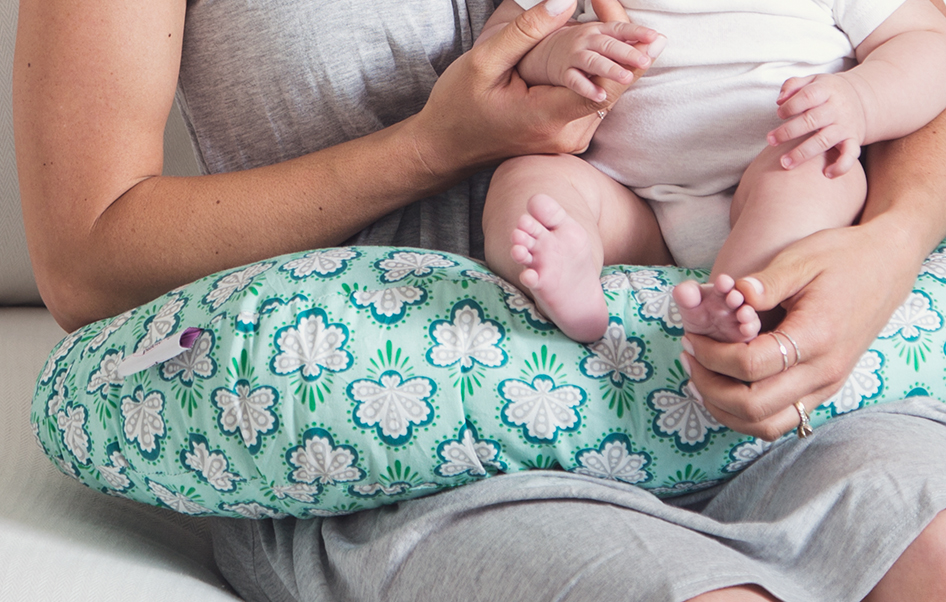Uncategorized
What to Expect When You’re Having a C-Section

In 2007, my ob-gyn scheduled me for a planned C-section due to a prior spinal surgery I had when I was 16. I had no idea the titanium rods and bolts attached to the full length of my spine would mean I couldn’t deliver vaginally. My ob-gyn was mostly concerned with back labor that might disrupt my fused spine. Long story short, I knew I was an insurance liability. I agreed to a scheduled C-section, and here’s what I learned along the way.
You have your baby earlier than expected.
My original due date was September 8, 2007, but my ob-gyn scheduled my C-section for August 30. “In the absence of any maternal or fetal medical condition, the ideal time to schedule a C-section is at 39 weeks, about one week before the due date,” says Dr. Iffath Hoskins, MD, clinical associate professor, Department of Obstetrics and Gynecology at NYU Langone Medical Center.
“This is because a patient’s due date is an estimated calculation and not an exact date.” She says the doctor tries to choose a date as close to the estimated due date as possible, while still trying to avoid the expecting mother going into labor spontaneously. Worked for me!
There’s no eating or drinking after midnight.
You’re having surgery, so this means you need to curb fluids and food starting at midnight. If you’re like me, you’ll want to indulge as long as possible. My post C-section meal consisted of homemade lasagna and strawberry ice cream. I hydrated with lemon water as long as possible.
There are two reasons you can’t eat or drink:
- If you need to be intubated and put to sleep, you could choke on what’s in your digestive track or stomach.
- A lot of people vomit due to a mix of meds, anesthesia, and food.
Be prepared to wait about 12 hours before eating after your C-section, too. (Then make someone get you something amazing, like a giant Italian sub because you couldn’t eat cold cuts for nine months.)
The day of your C-section is extremely choreographed.
Since you know the date and time you’re giving birth, everything plays out like a ballet with no kinks. I set my alarm clock, showered, and dried my hair. I grabbed my pre-packed hospital bag and because I’m a single parent, my brother drove me to the hospital. I was pre-registered so all I had to do was change into a gown and lay in bed watching TV. The nurse started an IV. When it was time to start my surgery, I walked into the OR. I just walked in, like, Heeey, I’m here to have a baby.
The spinal doesn’t hurt, but it’s weird.
First, an anesthesiologist injects a local anesthetic into your spinal fluid. This feels like a quick, warm bee sting, but quickly numbs the area so you don’t feel the bigger needle — a spinal going in. In fact, I asked my doctor to get it over with already, but it was done. See you don’t feel it!
Next, the lower half of your body, including your legs, go numb. Don’t worry, you’re completely with it and awake during the delivery of your baby. “Most women stay numb approximately two hours,” says Dr. Hoskins. “The range is 1.5 to 3.5 hours.” In that time you’re paralyzed: you can’t move your legs or wiggle your toes — the weird part if you ask me.
There may be no skin-to-skin bonding.
I didn’t get to bond with my baby. I just met him for four seconds, and it was a major bummer. It’s mostly about hospital procedures, routine, and not emergent situations. In fact, most of the time babies are separated from their mothers after a C-section so that the hospital can provide post-op care to mom and newborn care in separate rooms. But times are changing and women seeking to bond with baby after their C-section are finally being heard. Here’s more information on bonding with baby no matter the route of delivery.
Tip: My girlfriend made her husband set the baby on her chest. The baby latched and the nurses couldn’t take her out of the OR. A sneaky move, but a win for mom and baby!
You’ll be in recovery for the first few hours post-birth, not on the maternity floor.
“The patient’s vital signs, post-op pain, and any complications such as nausea, vomiting, fever, or bleeding need to be monitored,” advises Dr. Hoskins. She says to expect a two hour stay in recovery while your baby is in the nursery. Afterwards, you’ll be moved to a maternity room and reunited with baby. Most C-section patients remain in the hospital for three to five nights for monitoring and pain management. (And that was something I welcomed!)
You’ll have stitches or staples.
They don’t hurt at all, but can be itchy. “If the incision is closed with staples (or a permanent suture), they will be removed approximately four to five days post-op (or even up to seven days post-op),” says Dr. Hoskins. “If a self-dissolving suture is used (this is the preferred choice), nothing needs to be removed. The stitches will self dissolve in seven to ten days.”
Pain and weight-lifting need to be taken seriously.
Don’t overdo it. Pain (yes, there will be some) can be managed by prescription painkillers or over-the-counter meds like Tylenol. I mostly recall a burning sensation when I stood up and sat down. I had dull pain in the incision area like someone had punched me, but it was bearable.
“In general, in the first one to two weeks post-op, moms can lift approximately 10 to 12 lbs.,” says Dr. Hoskins. “The back and abdomen muscles have not yet fully regained their strength (after the stretching and hormonal effects of pregnancy).” She says to consult your doctor at your post-op appointment about when you can regain normal lifting. My rule of thumb was to only lift my wee little baby until my ob-gyn said otherwise.
You don’t have to have another C-section.
Well, I do because I have a previous spinal condition. But say you had a C-section because labor wasn’t progressing — you can totally push the next time around. “That adage no longer holds true. The patient can undergo a Trial of Labor After Cesarean (TOLAC),” advises Dr. Hoskins. “This can occur after up to two prior C-sections. There is an approximately 1 to 1.5 percent chance of uterine rupture in this setting.”
The post What to Expect When You’re Having a C-Section appeared first on Babble.





You must be logged in to post a comment Login